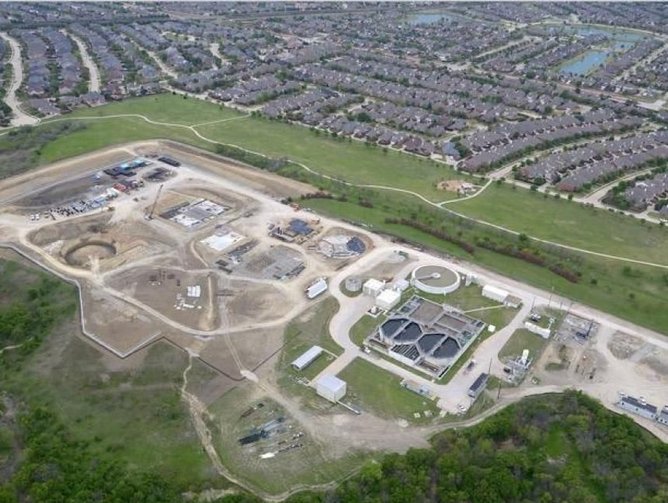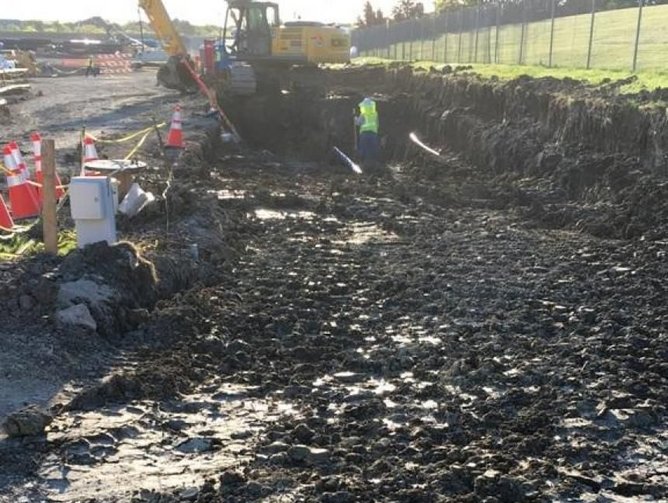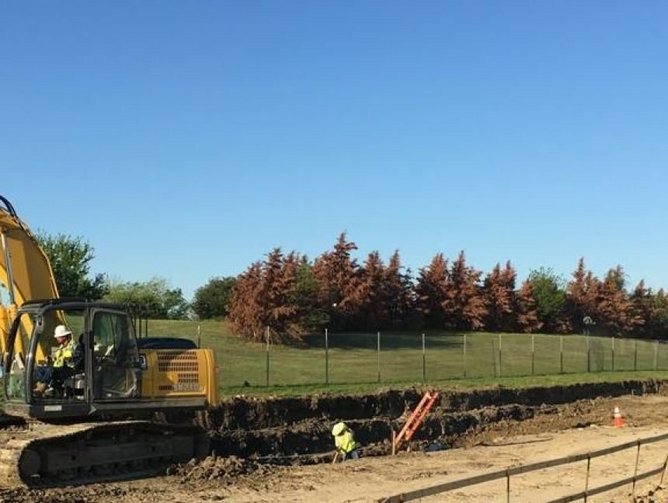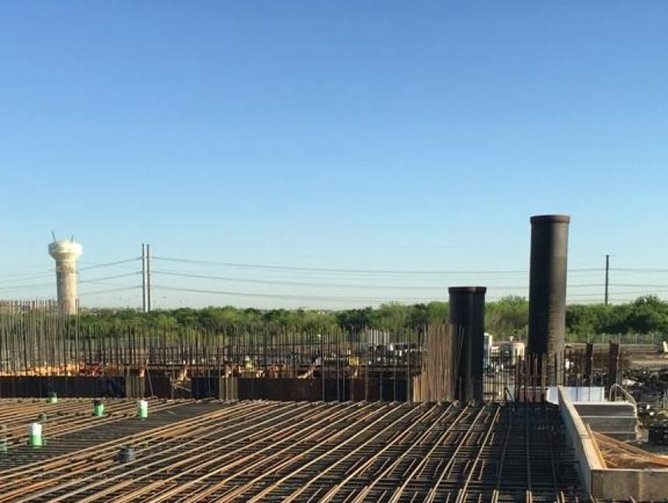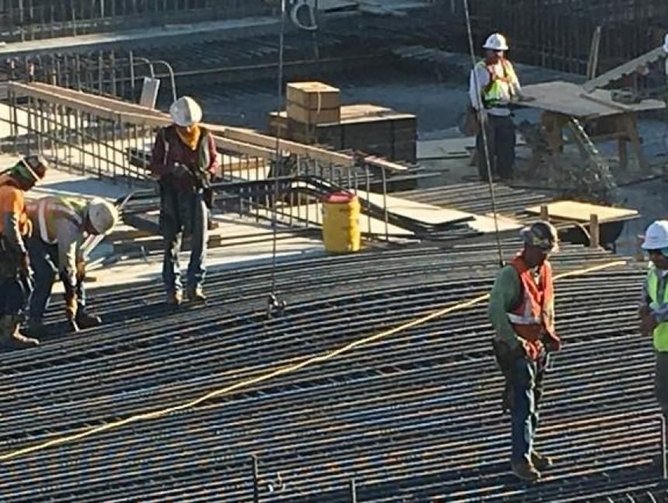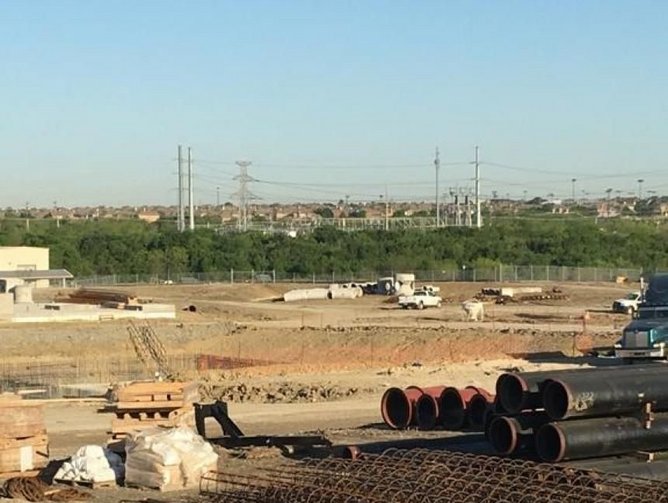With a goal of meeting the drinking water, wastewater treatment and solid waste disposal needs for the member cities and customers, the North Texas Municipal Water District (NTMWD) looks to provide regional service through unity to fulfill the needs of today and tomorrow.
With a service population projected to double by 2040 and triple by 2060, North Texas is home to one of the fastest growing regions in the United States.
To continue to meet the needs of the cities it serves, NTMWD will continue to collaborate with the cities to develop infrastructure requirements to meet the needs of the region, today and tomorrow.
“The partnerships we have with those cities are really important,” said NTMWD assistant deputy director of wastewater Jenna Covington. “They’re our clients; we’re here to serve them.
“Having those strong partnerships is critical to us being a good service provider to them.”
Economic development
NTMWD identifies future infrastructure needs to accommodate growth, develop and execute projects to meet the needs of the community.
Projects such as the new Dallas Cowboys training facility and the “$5 billion mile” of projects along the Dallas North Tollway invite huge amounts of growth to the area. NTMWD is preparing for this through infrastructure development and reinforcement projects, working closely with the city to project land use and population projections through build out.
“We’re in a very fast-growing area,” said Covington. “There’s significant challenge and opportunities associated with that, which puts us in a unique position.”
Such an opportunity comes in the form of the Stewart Creek Waste Water Treatment Program (WWTP). Currently rated at 5 million gallons per day (mgd), this set of construction projects is set to expand that figure to 10 mgd. The facility is permitted to discharge up to 15 million gallons per day in the future, with additional improvements.
“There’s a lot of big development happening within the service area of this facility,” said Covington. “There’s a lot of commercial development and residential high-rise development in that general vicinity that had really happened over the last couple years. The changing economic conditions are a big driver.”
Regulations have not changed as a result of the growth, however. For example, the Texas Commission on Environmental Quality has implemented new discharge requirements for facilities discharging in close proximity to reservoirs.
NTMWD is staying abreast of these increasing water quality discharge requirements, and has made provisions to meet the requirements using chemical precipitation on an interim basis.
New ways of thinking
NTMWD has closely coordinated with the City of Frisco to optimize the network of infrastructure and to meet the current and future needs for community members.
An example is the ability to transfer flow from Stewart Creek WWTP to Panther Creek WWTP (an existing 10 mgd facility also serving City of Frisco). This transfer has been used as an interim measure to support current development, provide redundancy, flexibility, and optimize capital capacity expansions.
The existing facility is continuing to be leveraged to reduce capital expenditures associated with the expansion.
NTMWD uses Supervisory Control And Data Acquisition (SCADA) to allow for a better understanding of what’s happening within the facility. This tool increases efficiency by controlling the equipment to produce higher quality water and save operating costs.
SCADA systems are adaptable in several different industries because they can range from simple configurations to large, complex projects. Virtually anywhere you look in today’s society, there is some type of SCADA system running behind the scenes. In NTMWD’s case, this system is used at ten water and wastewater treatment facilities.
Sustainability Measures
The City of Frisco is the leading utility for non-potable water reuse in North Texas, and NTMWD is pleased to partner with them in its sustainability endeavor.
Both the Stewart Creek WWTP and Panther Creek WWTP effluent water is used throughout the city for irrigation at locations such as Toyota Stadium, multiple schools, city parks, athletic complexes and open spaces.
In addition, NTMWD is a leading utility in the nation for indirect potable water reuse. Treated effluent is diverted into the 2,000 acre constructed wetlands for polishing and returned for use as water supply.
NTMWD plans to continue putting significant emphasis on public education, awareness of efficient use of water, and implementation of water reuse strategies.
Managing community needs and citizen input
“Communicating with stakeholders and addressing concerns has built trust. We maintain an open line of communication with neighbors and other stake holders such as nearby home owners associations and elected officials,” said Covington.
During the planning for the expansion of the plant, NTMWD and the City of Frisco held joint stakeholder meetings with local residents to address concerns, explain the need for the project, and discuss the treatment technologies that would be employed to address their concerns.
“Part of the Stewart Creek WWTP project is the construction of a berm with landscaping to create a nice visual, capture and treat foul air to reduce odor impacts, and consistently produce high quality effluent that is used throughout the city for irrigation and discharged into Stewart Creek.
“NTMWD puts significant investment and emphasis on developing and maintaining a good neighbor status,” Covington said.
